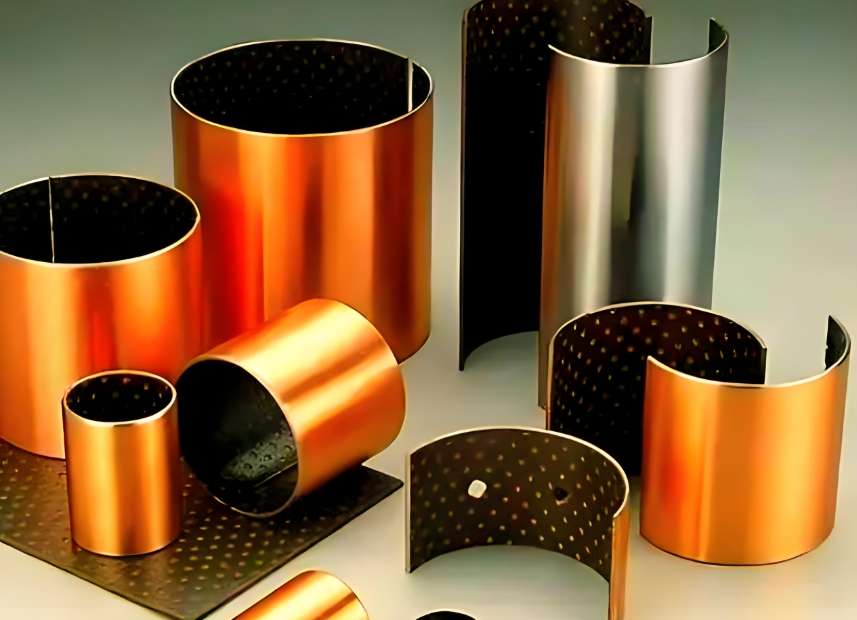
As AI computing power surges tenfold annually,chip thermal density is approaching its physical limits.An AI processor the size of a fingernail now consumes over a kilowatt of power—equivalent to compressing the heat of an electric heater into a coin.Traditional cooling solutions collectively fail under such thermal loads,while nanocopper pillar array structures,with their astonishing surface area-to-volume ratio,become the key to breaking through the cooling bottleneck.But how to precisely machine micro-pillars with diameters only a hundredth of a human hair?This poses an unprecedented challenge to CNC micro-milling technology.
The Paradox of Nanocopper Pillar Machining:When Soft Metal Meets Micro-Scale
Copper is an ideal thermal conductor but exhibits troublesome characteristics in micro-machining:
• Ultrafine grain structure:Nanocopper has a hardness far exceeding that of bulk copper,yet the pillar array is still prone to plastic deformation during machining.
• Thermal sensitivity trap:The instantaneous high temperatures(>200°C)generated by local milling can cause copper grains to coarsen,thereby reducing thermal conductivity.
• Size effect:When the cutting tool diameter is less than 100 micrometers,the cutting force changes from macroscopic"shearing"to atomic-scale"extrusion."
This contrasts sharply with the machining of large metal parts—where the turning and milling of wind turbine main shafts can rely on machine rigidity to overcome deformation,but in micro-pillar array machining,a 0.1-micrometer vibration offset can cause the entire array to collapse.
Five Key Challenges in Micro-Milling Technology
Tooling Limits
A tungsten carbide end mill with a diameter of 30 micrometers(the size of a red blood cell)cutting at 100,000 revolutions per minute experiences a centrifugal force 200,000 times its own weight at the cutting edge.We have extended tool life by three times using diamond coating technology and optimized the helix angle design through cutting simulation to prevent micro-tool"brittle fracture."
Microscopic Vibration Control
We have developed a sub-micron vibration suppression system that actively cancels spindle vibrations using piezoceramics.While vibration control at the 5-micrometer level is acceptable for machining photovoltaic robot joints,nanocopper pillar machining requires an amplitude of less than 0.2 micrometers—necessitating a redesign of the machine tool dynamics model.
Delicate Thermal Management
We employ atomized cooling and minimum quantity lubrication technology:2-micrometer cooling oil droplets are precisely sprayed onto the cutting point,removing heat within 0.01 seconds without collapsing the copper pillars.Compared to the flood cooling used in turning and milling precision metal parts,this is like replacing a fire hose with an eyedropper.
Multi-Physics Coupling Compensation
We have established a predictive model for cutting force,thermal deformation,and residual stress.When milling the 500th copper pillar,the system automatically compensates for the substrate micro-warping caused by previous machining,ensuring that the height difference between all pillars is less than 1 micrometer.
Ultra-Precision Positioning Reference
We use a laser interferometer to achieve nanometer-level closed-loop positioning.While 5-micrometer precision is required for machining silicon carbide modules for new energy vehicles,copper pillar array machining demands a positioning error of less than 0.3 micrometers—equivalent to hitting a sesame seed on a football field.
The Value of Reconstructed Process Chains
After adopting this process,an AI chip manufacturer reduced the thermal resistance of the cooling module by 40%and gained three hidden benefits:
• Yield improvement:The yield of copper pillar arrays increased from 63%to 98%,reducing chip downclocking caused by cooling issues.
• Design liberation:Engineers can design 50-micrometer-diameter irregular copper pillars(e.g.,spiral structures),breaking through the geometric limitations of traditional etching processes.
• Material innovation:The process is compatible with copper-graphene composite materials,achieving an interfacial thermal conductivity of over 1600 W/mK.
Paradigm Shift in Micro-Nano Manufacturing
Nanocopper pillar array machining pushes CNC technology to a new dimension.While large metal part machining is still tackling precision at the hundredth of a millimeter,micro-milling technology is already pioneering in the thousandth of a millimeter.This cross-scale technological evolution is akin to the leap from sculpting boulders to micro-engraving agate.
Each perfectly formed copper pillar is a delicate balance of thermodynamics and mechanical machining.As milling technology breaks through the barriers of the microscopic world,the heat demons that once constrained computing power will eventually dissipate invisibly in the dense forest of precision copper pillars.This is not only a victory for cooling technology but also another elegant proof of humanity's ability to master matter at the nanoscale.